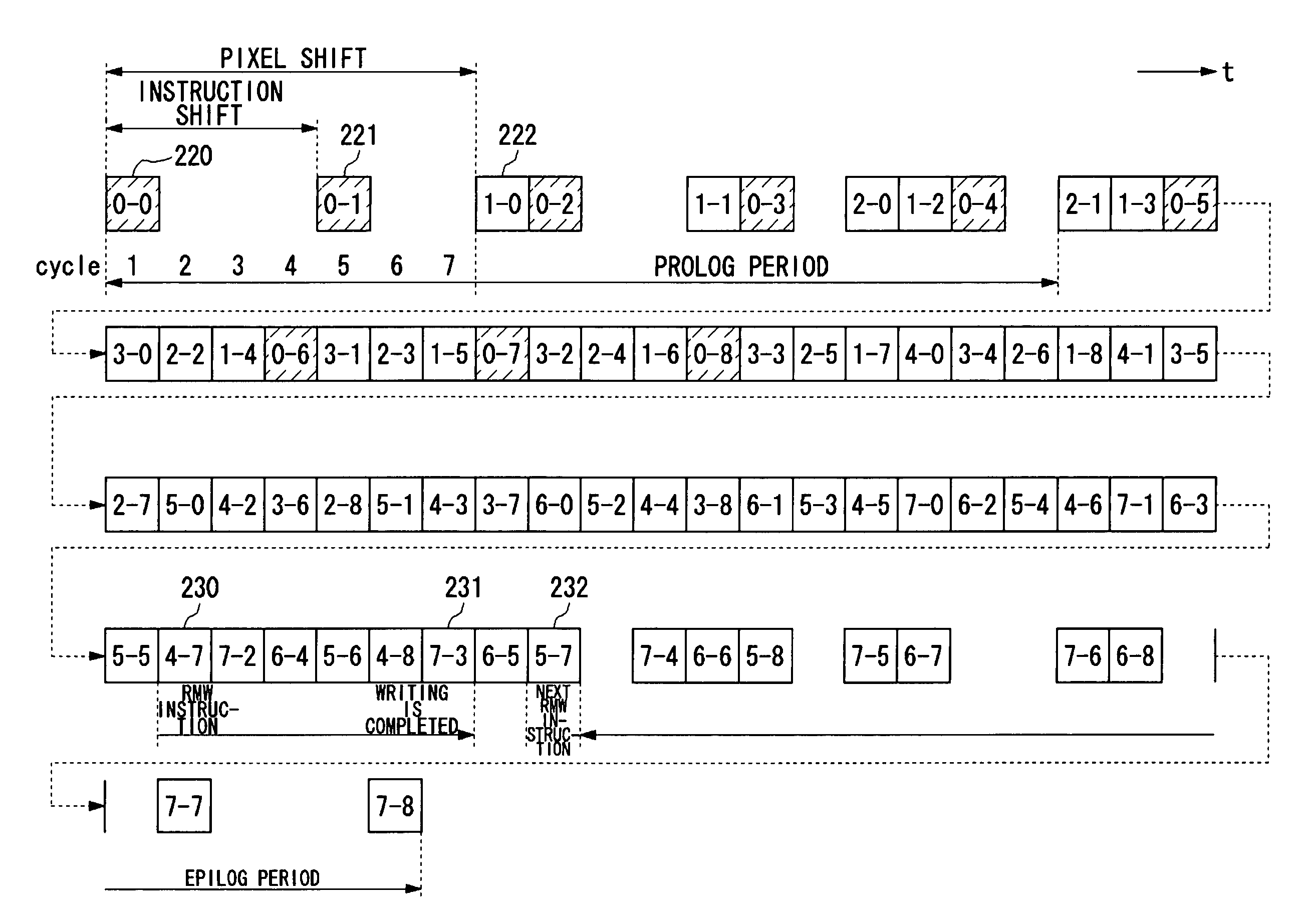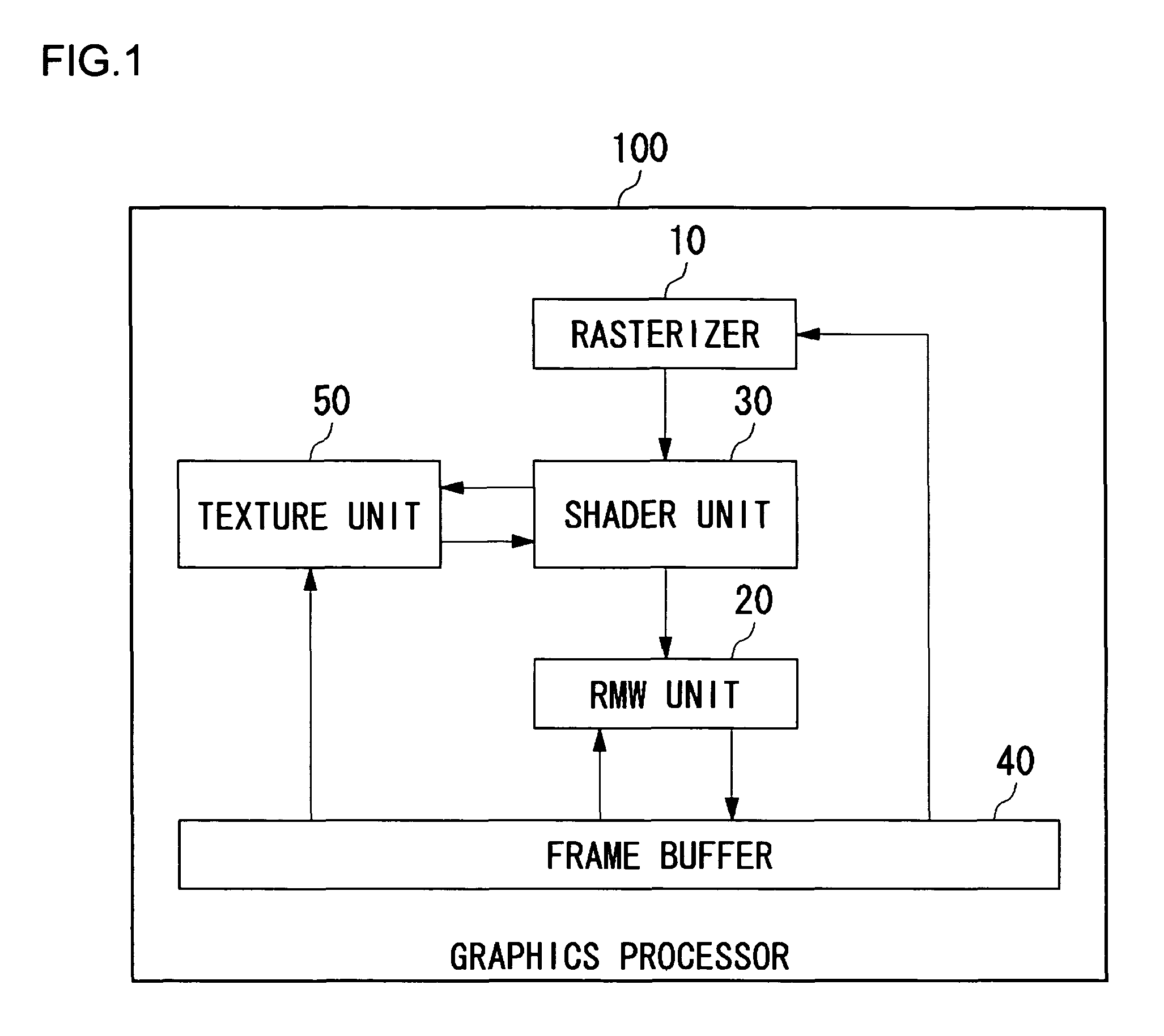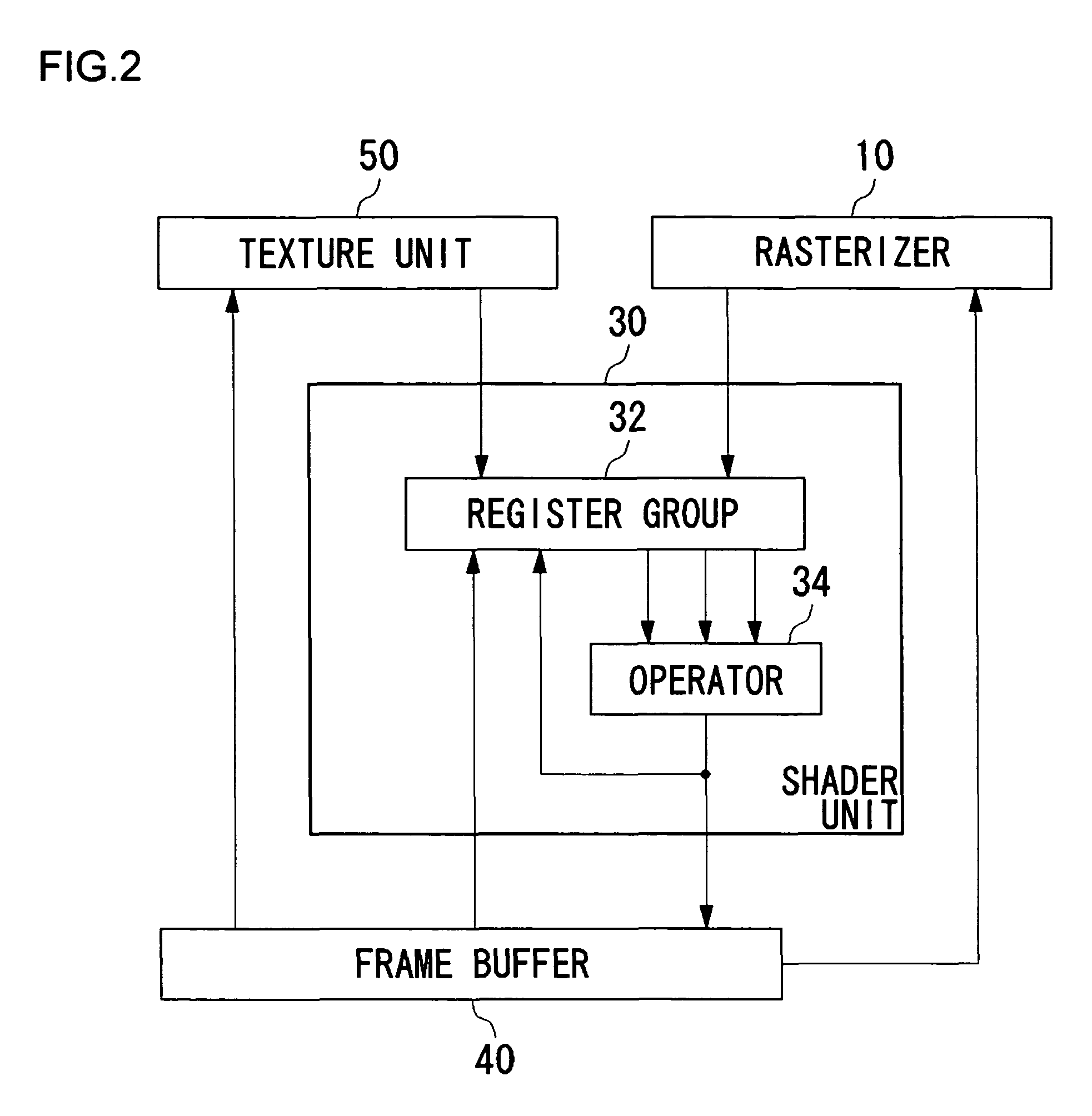Graphics processor, graphics processing method, information processor and information processing method
a graphic data and graphics processor technology, applied in the field of information processing technology, can solve the problems of reducing efficiency, reducing efficiency, and reducing the efficiency of application development, so as to improve the efficiency of sequential arithmetic processing of data and improve the efficiency of graphic processing
- Summary
- Abstract
- Description
- Claims
- Application Information
AI Technical Summary
Benefits of technology
Problems solved by technology
Method used
Image
Examples
Embodiment Construction
[0028]FIG. 1 shows the structure of a graphics processor 100. The graphics processor 100 performs a rendering process for generating rendering data based upon three-dimensional modeling information.
[0029]The rasterizer 10 receives vertex data of a primitive to be rendered from a memory, another processor or a vertex shader and transforms the vertex data into pixel information corresponding to the screen on which to be rendered. Generally, a rendering primitive is a triangle. The rasterizer 10 performs a view transform by projective transform of a triangle in the three-dimensional space into a triangle on a rendering plane. Further, the rasterizer 10 scans the triangle on the rendering plane in the horizontal direction so as to transform, row by row, the triangle into quantized pixels. The rasterizer 10 develops the rendering primitive into pixels and computes, for each pixel, pixel information including color values in the RGB format, an a value indicating transparency and a Z value...
PUM
 Login to View More
Login to View More Abstract
Description
Claims
Application Information
 Login to View More
Login to View More - R&D
- Intellectual Property
- Life Sciences
- Materials
- Tech Scout
- Unparalleled Data Quality
- Higher Quality Content
- 60% Fewer Hallucinations
Browse by: Latest US Patents, China's latest patents, Technical Efficacy Thesaurus, Application Domain, Technology Topic, Popular Technical Reports.
© 2025 PatSnap. All rights reserved.Legal|Privacy policy|Modern Slavery Act Transparency Statement|Sitemap|About US| Contact US: help@patsnap.com



